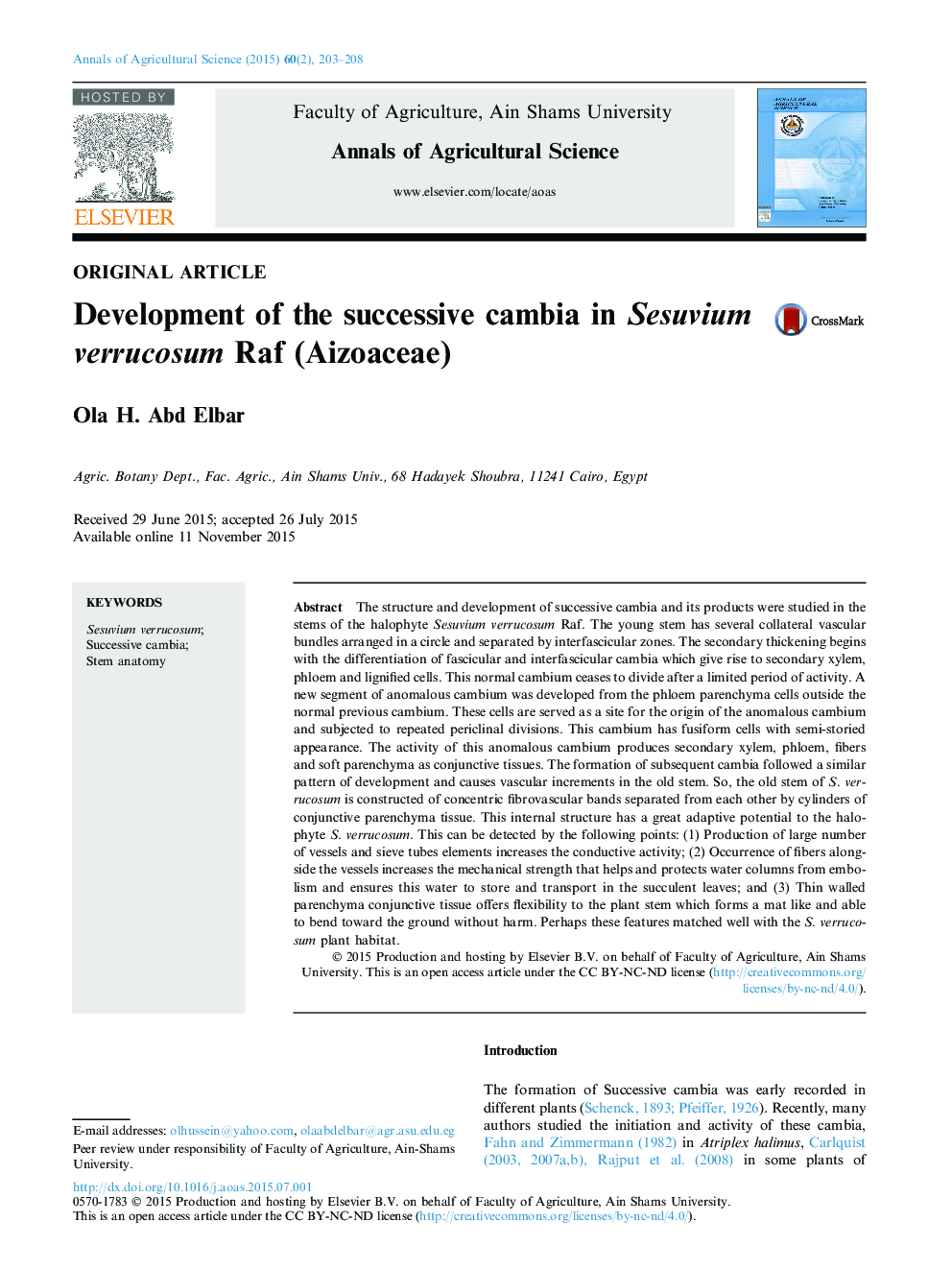| Article ID | Journal | Published Year | Pages | File Type |
|---|---|---|---|---|
| 4492831 | Annals of Agricultural Sciences | 2015 | 6 Pages |
The structure and development of successive cambia and its products were studied in the stems of the halophyte Sesuvium verrucosum Raf. The young stem has several collateral vascular bundles arranged in a circle and separated by interfascicular zones. The secondary thickening begins with the differentiation of fascicular and interfascicular cambia which give rise to secondary xylem, phloem and lignified cells. This normal cambium ceases to divide after a limited period of activity. A new segment of anomalous cambium was developed from the phloem parenchyma cells outside the normal previous cambium. These cells are served as a site for the origin of the anomalous cambium and subjected to repeated periclinal divisions. This cambium has fusiform cells with semi-storied appearance. The activity of this anomalous cambium produces secondary xylem, phloem, fibers and soft parenchyma as conjunctive tissues. The formation of subsequent cambia followed a similar pattern of development and causes vascular increments in the old stem. So, the old stem of S. verrucosum is constructed of concentric fibrovascular bands separated from each other by cylinders of conjunctive parenchyma tissue. This internal structure has a great adaptive potential to the halophyte S. verrucosum. This can be detected by the following points: (1) Production of large number of vessels and sieve tubes elements increases the conductive activity; (2) Occurrence of fibers alongside the vessels increases the mechanical strength that helps and protects water columns from embolism and ensures this water to store and transport in the succulent leaves; and (3) Thin walled parenchyma conjunctive tissue offers flexibility to the plant stem which forms a mat like and able to bend toward the ground without harm. Perhaps these features matched well with the S. verrucosum plant habitat.
